Owls are birds of the night, renowned for their scary gaze and high-pitched screech. Also, they have an unsettling posture that adds to their spookiness.
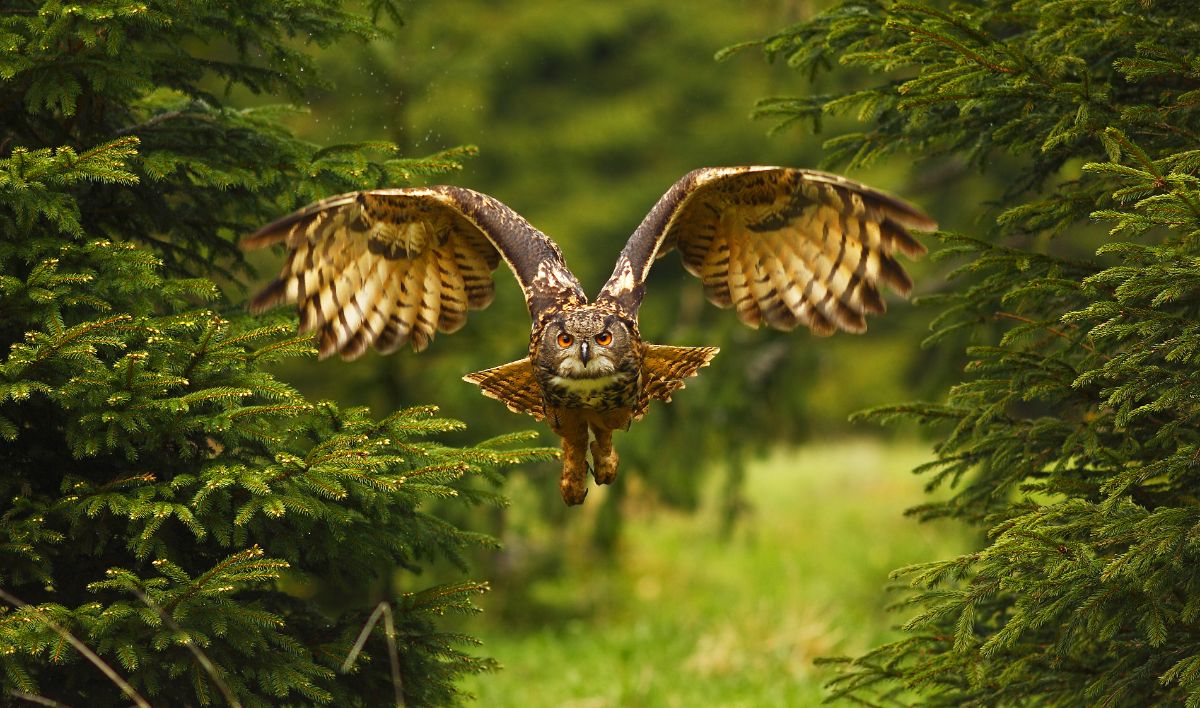
In addition to being an unnerving bird species, owls are predatory birds that hunt, kill, and consume other animals. It’s not just us that find owls terrifying; their potential prey probably feels the same way. Typically, owls consume tiny animals and insects, but do they hunt birds?
Yes, owls do hunt birds. The size of prey it’s likely to pursue highly depends on the owl’s size and its bird-eating preferences. However, tiny owls are more unlikely to hunt birds than their larger counterparts.
Continue reading to discover the seven types of birds that owls love to eat.
Contents
1. Eurasian Tree Sparrow
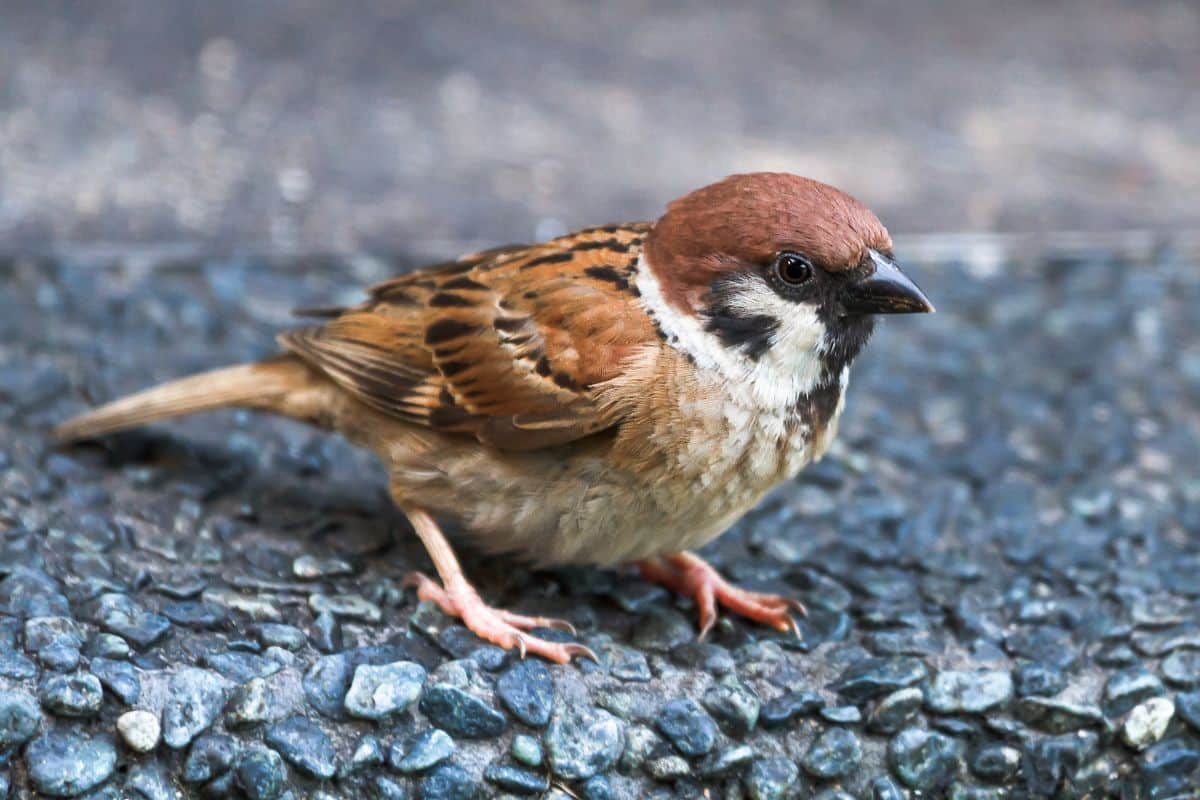
- Scientific Name: Passer montanus
- Length: 5.5-5.9” (14-15cm)
- Weight: 0.6-1.0oz (18-28g)
- Wingspan: 7.9-8.7” (20-22cm)
Compared to its larger cousin, the House Sparrow, the Eurasian Tree Sparrow isn’t as fond of human habitation and instead avoids villages and towns. It ideally inhabits vegetable gardens, woodland borders, hedges, and orchards.
It isn’t territorial. It nests in holes and prefers nest boxes because it may evict inferior species if needed. The Eurasian Tree Sparrow’s beak is narrower than the House Sparrow, which explains why they consume grains while still milky-white and unripe. It loves grass seeds and several types of wild plants.
However, the similar habitation of the Eurasian Tree Sparrow with the long-eared owl makes it a potential prey. You’ll spot these owls on tree perches or the ground as they monitor their movements and try to time their pounce. These owls use their claws to snatch up the sparrow, mainly from its nest.
2. New World Warbler
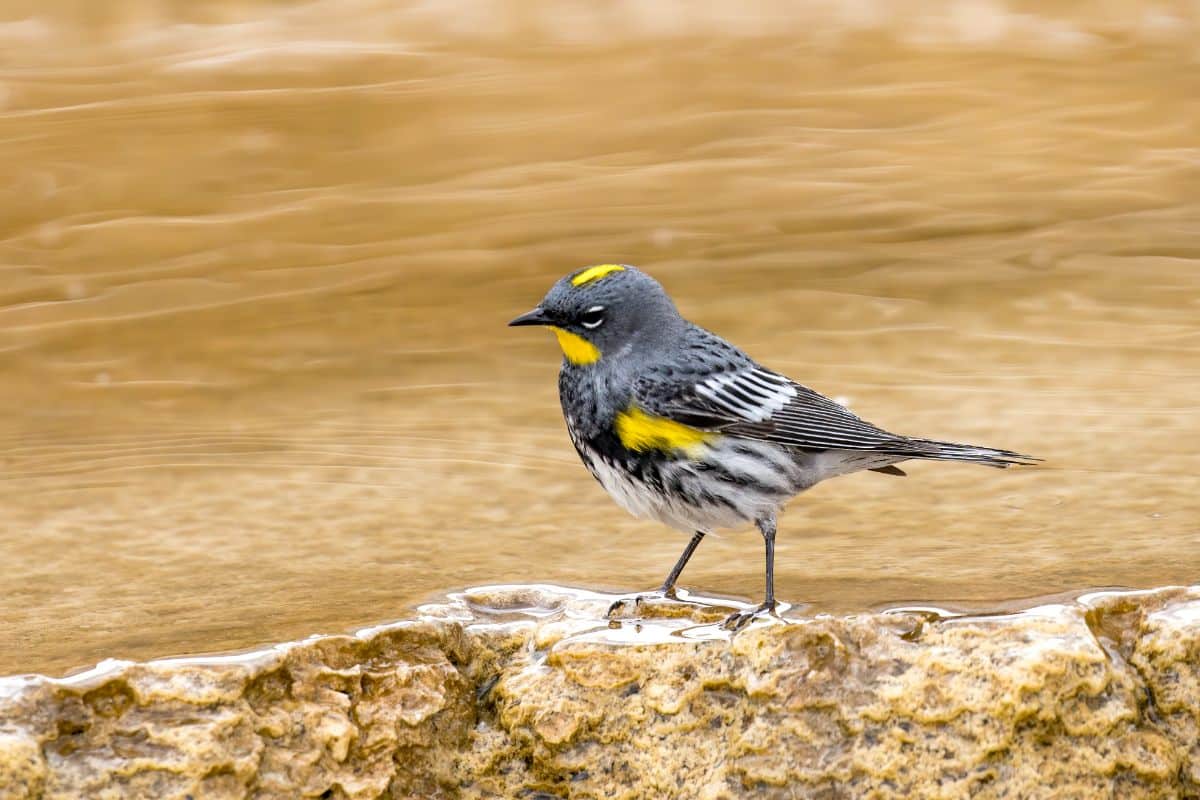
- Scientific Name: Parulidae
- Length: 4-7.5″ (10-19cm)
- Weight: 0.5-2oz (15-57g)
- Wingspan: 8-9” (20-23cm)
Warblers are a diverse bunch of species of tiny songbirds. Some common examples include Worm-Eating Bird, Bachman’s Warbler, and the Ovenbird.
Most New World Warblers are little. Therefore, they could easily fall prey to numerous kinds of owls, especially those of medium to big size. Nonetheless, owls such as Burrowing Owls, Screech Owls, and Boreal Owls are more willing to eat warblers.
These owls’ can fly in utter silence, and their excellent hearing and nighttime vision enable them to identify and strike other birds easily. After they’ve captured their prey, the strong beak and talons of the owl make it easy for them to butcher it.
3. Woodpeckers
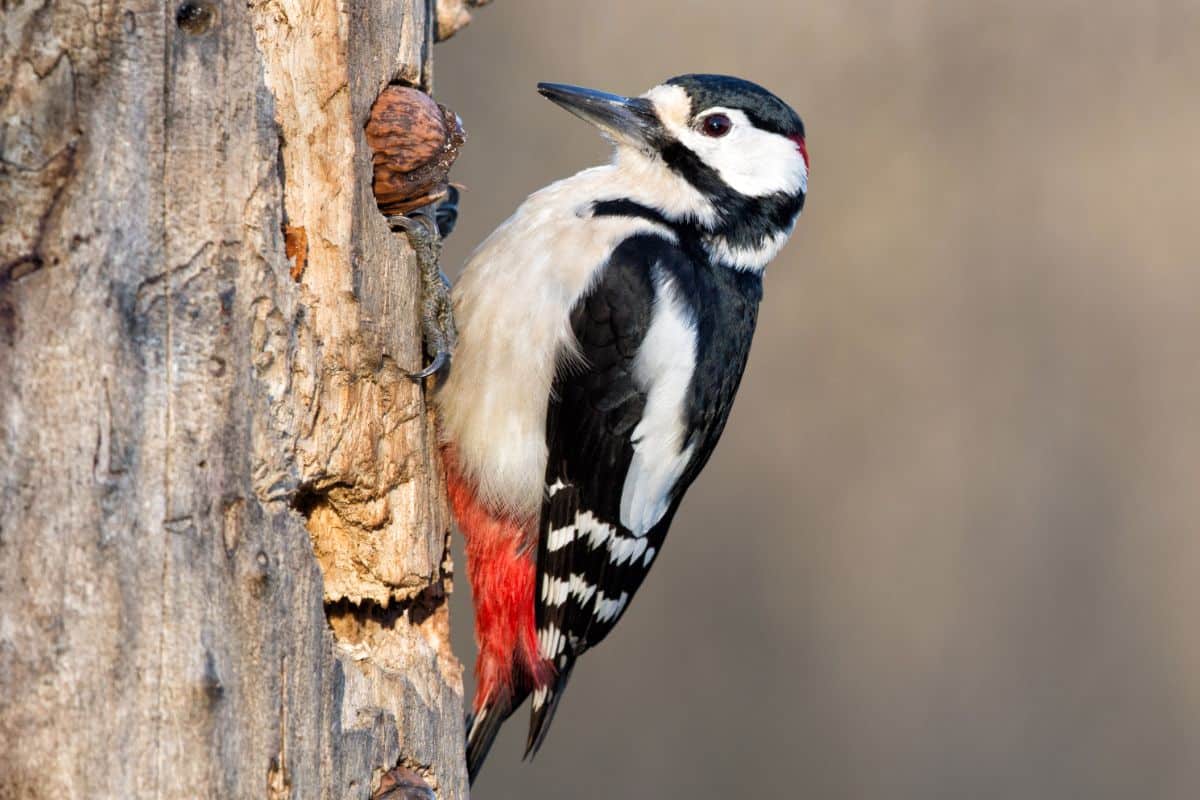
- Scientific Name: Picidae
- Length: 7.5-9″ (19-23cm)
- Weight: 15-19.9oz (430-563g)
- Wingspan: 16-30” (40-76cm)
Woodpeckers are members of the Picidae family. This family has birds all over the planet, apart from New Zealand, New Guinea, Australia, and the polar areas. Several species are recognized to inhabit treeless settings, including deserts and rocky hillsides, while other woodpeckers focus on feeding on cacti.
The woodpeckers are well recognized for their members’ characteristic behavior. They primarily feed on insects on tree branches or trunks.
Woodpeckers frequently communicate by tapping their beaks to produce a noise that is detectable from a distance. Different species have varying diets, including tiny animals, human scraps, fruits, tree sap, and more.
The barred owl, great horned owl, and eastern screech owl are typical woodpecker predators. As a nocturnal predator, it hunts woodpeckers during the night. These owls have exceptional hearing and often hear a woodpecker hammering on a branch from a great distance. Once they detect that sound, they’ll rush to the tree to capture the woodpecker.
4. Ducks
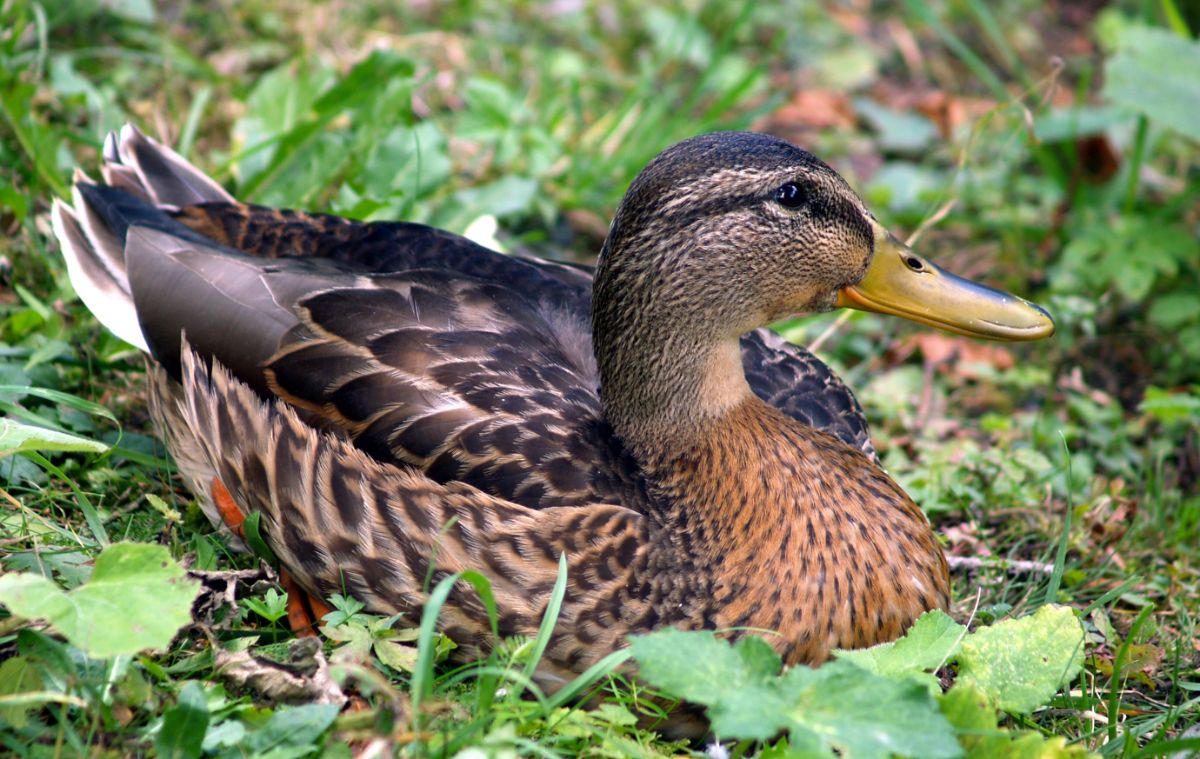
- Scientific Name: Anatidae
- Length: 20-26″ (50-65cm)
- Weight: 25.4-56oz (720-1600g)
- Wingspan: 32-39” (81-98)
Owls are particularly destructive to ducks, as they can consume many ducks in a single night. They hunt by perching on trees and diving at their prey. Unprotected, one great horned owl could take out a whole paddling of ducks and fowl.
Owls are quite ferocious. In the open, they’ll often hunt birds that are smaller in them. They have incredibly active metabolisms and must consume a great deal of food. If they come across the duck’s eggs, they’ll also not mind eating them.
Their technique of attack is to swoop down and seize their target. They use their teeth and claws to capture their prey, typically biting and ripping off the duck’s head. If you observe owls in the neighborhood, you should take action immediately to prevent losing your raft to them.
5. Falcons
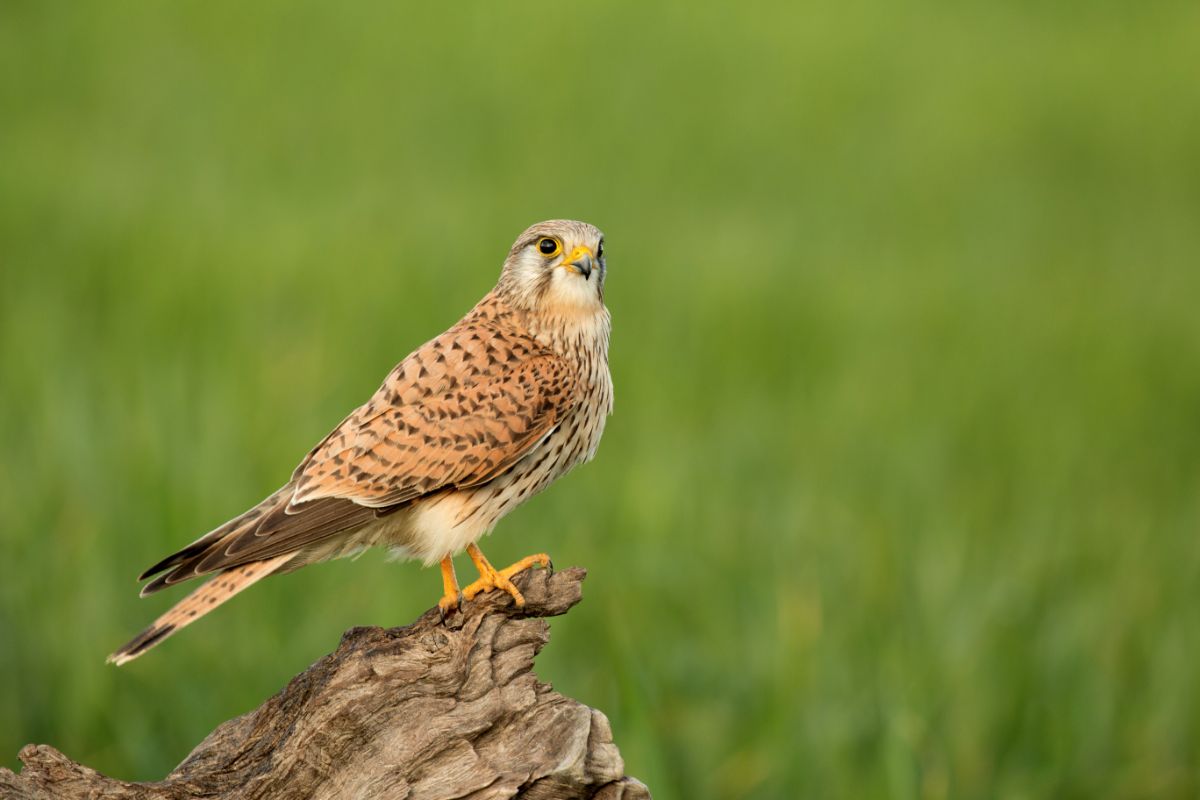
- Scientific Name: Falconiformes
- Length: 13-23″ (34-58cm)
- Weight: 18.7-56.4oz (530-1600g)
- Wingspan: 29-47” (74-120)
As with other birds of prey, falcons, renowned for their speed and accuracy, hunt for food peregrine falcons can dive at speeds exceeding 200 miles an hour!
Falcons are closely related to hawks and share their ferocity and speed of reaction. Thin, pointed wings accompany their sleek bodies. Due to their quickness, these birds may frequently capture their prey in mid-flight.
Even though falcons are technically birds of prey, huge owls view them in a different light. Eagle and Great Horned Owls will eat falcons if the opportunity presents itself. Eagle owls will consume nearly anything so long as it weighs less than them. And it makes no difference whether the prey is flying, swimming, running, or already dead.
6. Doves
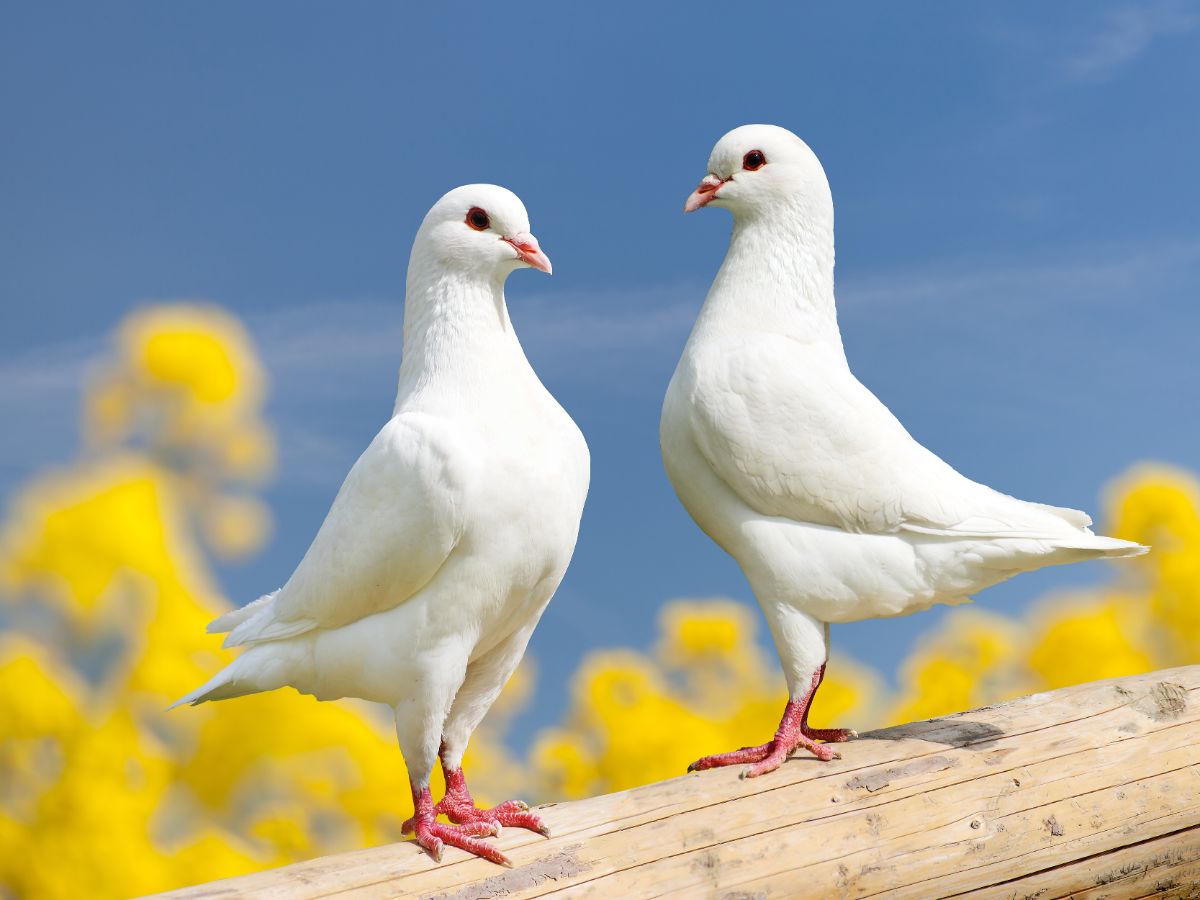
- Scientific Name: Columbidae
- Length: 8.9-14.2″ (22.5-36)
- Weight: 3.4-6.0oz (96-170g)
- Wingspan: 56-59” (142-150cm)
Doves are found on every continent except Antarctica. While each species has its history, all doves share a similar taste for their habitat. Typically, they occupy temperate forests and woodlands, bare sands, grasslands, mangrove forests, and savannas.
Doves aren’t necessarily the most fascinating or flashy birds, but they have a good fan base among avian enthusiasts. Unlike most other birds, birds prefer to build their nests in trees or other high places. They frequently build their nests on the ground or relatively close to it.
Like doves, long-eared owls inhabit dense coniferous forests. Their diet includes field voles, bank voles, and wood mice, but they can occasionally consume birds. They use a hunting technique called ‘quartering,’ which involves hovering close to the ground to spot potential prey.
7. Finch Birds
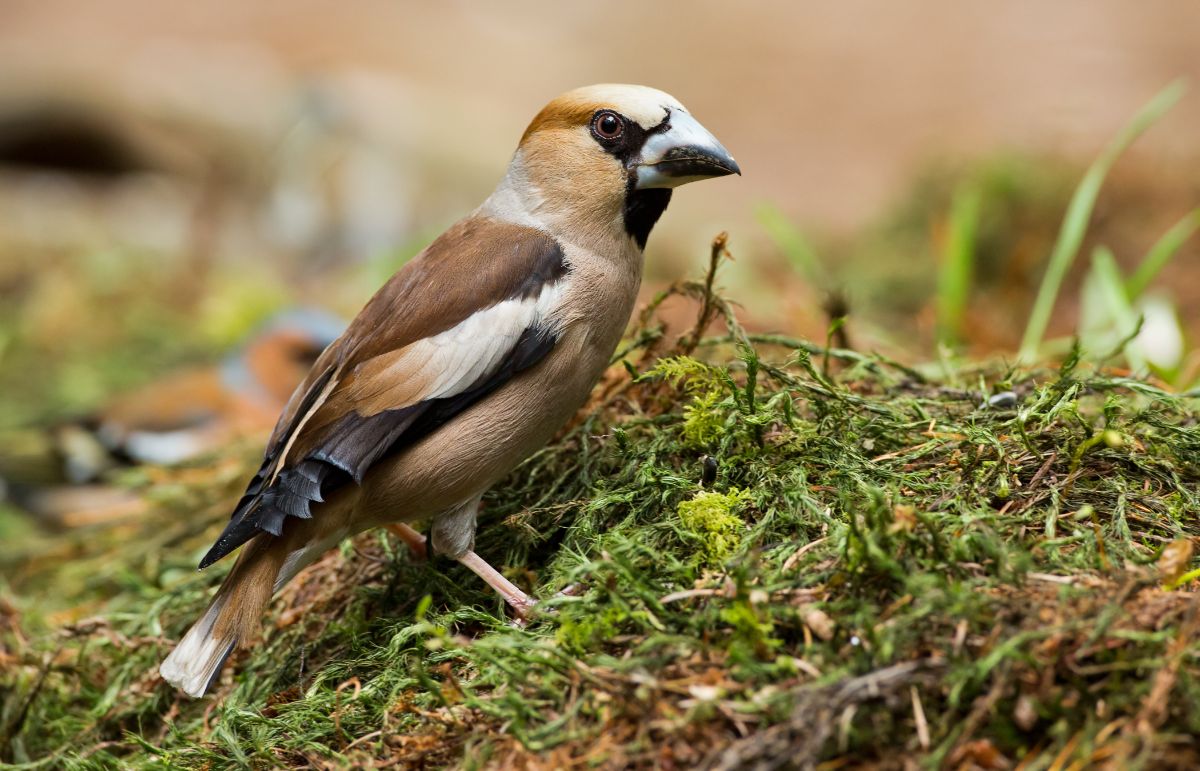
- Scientific Name: Fringillidae
- Length: 3-10″ (10-27cm)
- Weight: 0.6-0.9oz (16-27g)
- Wingspan: 7.9-9.8” (20-25cm)
Finches range in size from tiny to moderate. The bird’s large, conical beaks are well-suited to a diet of nuts and seeds and are quite colorful.
As sociable birds that thrive in huge flocks in the wild, finches must be housed alongside each other. Finches are perfect for those who appreciate observing but not handling pet birds.
However, in the wild, the size of these birds makes them easy prey to owls. Most owl species attack finches from low branches, fence posts, or stumps. They’ll wait for prey to emerge before swooping down with outstretched wings and extended talons. Once captured, the owls’ tough claws can kill the prey mid-flight.
FAQs
Here are some of the most frequently asked questions about owls eating other birds.
Do owls eat the whole bird?
As with all birds, owls lack the teeth necessary for food breaking food in the mouth. Typically, they consume their meal whole or in huge portions. Indigestible hair, insect exoskeletons, and furs aid digestion inside the owl’s stomach.
What is the most common food for owls?
The primary food source for Owls is dependent on the species. For instance, Screech Owls predominantly consume insects, whereas Barn Owls primarily consume voles, shrews, and mice. Eagle Owls and other larger owls hunt on young foxes, hares, and birds as huge as game birds and ducks.
Wrap-Up
Birds are a staple of the diet of owls, and it isn’t uncommon for larger owl species to feed on smaller owl species. As predators, their size is the primary determinant of the types of birds they consume.
The environment and species of owls are other vital variables. Thanks to their better night vision than most other birds, owls could readily approach their prey undetected.
